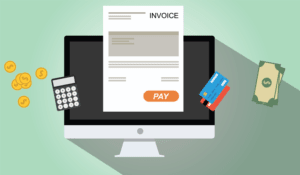Bookstime
Effective Cash Flow Management in Construction Expert Tips

Examining historical data provides valuable insights into financial trends, potential challenges, and successful strategies employed in past projects. It serves as a reference point for creating accurate cash flow forecasts and making informed financial decisions for the current project. Cash flow refers to the movement of money into and out of a construction project over a specific period of time. Effective cash flow management is crucial for the success and sustainability of construction projects.
- While this is understandable, every construction company should be projecting their cash flows and having a good and detailed understanding of these numbers.
- Not to mention the impact that a late or non-delivery of goods and materials can have on a project in terms of time and costs.
- That’s how the Profit First method can help you budget your money, stay on top of spending, and avoid cash flow crises.
- A contractor’s cash flow statement or report is an analysis of all the cash that came in and went out for a given period (usually one month).
- Each scenario considers varying factors, such as best-case, moderate, and worst-case situations, and their corresponding effects on cash flow in construction.
Speed up client payments with Buildertrend Payments
From a project management standpoint, there Bookkeeping for Veterinarians are many different types of construction cash flow analyses and strategies for better predicting and projecting cash flows. There has been a lot of time and effort spent on construction cash flow analysis, both from a company and project management perspective, as well as an academic and research standpoint. In the construction industry, understanding the financial position of each job can be key to a company’s success. Job profitability reports provide a clear view of a project’s financial performance,… Effective cash flow management in construction can significantly benefit from a strategic mix of contract types. This approach diversifies revenue streams and introduces variability in cash flow timing, which can be critical for maintaining liquidity and financial stability.
The Impact of Data-Driven Construction Safety Systems: 3 Examples
- Addressing these challenges requires proactive strategies and effective solutions to maintain financial stability and project progress.
- By automating these processes, the software not only helps streamline financial management but also minimizes the risk of errors, ensuring more accurate billing and expense tracking.
- If they use those funds, a charge must be calculated against it because it could have invested elsewhere and earned profits.
- By financing materials for a construction job, you can keep more cash on hand for payroll, take on other projects, or make necessary capital expenditures.
- Cash flow in construction forecasting in construction requires a meticulous analysis of historical data, detailed projections of income and expenses, risk assessment, and continuous monitoring and adjustment.
Open communication about financial situations can encourage suppliers to offer extended payment terms or discounts for early payments. Firms may find themselves in a challenging position where they need to fund ongoing operations while waiting for client payments or project milestones. This initial investment can create cash flow pressure, especially if a company lacks sufficient working capital. Construction projects often involve numerous variables, such as weather delays, changes in QuickBooks project scope, and fluctuating material costs. This access to capital can be crucial for scaling operations, taking on larger projects, or investing in new technologies.
Try cash flow forecasting 📊
Without some basic cash flow projections, no matter how good the company is at ‘construction’, it may find itself out of money and in the red. Making an effort to do proper construction cash flows and spend time on these financial metrics is the best first step towards keeping your ducks in a row. Even so, there are a bunch of specific things which each construction company can do and implement to impact their own cash flows on construction projects. Utilizing sophisticated project management software that is fully integrated with an accounting system offers a streamlined approach to cash flow management. This integration allows for the seamless automation of financial transactions, including meticulously tracking invoices issued to clients and their reconciliation with the project’s incurred expenses.
What is Cash Flow Management in Construction?
If you charge interest and other fees to your business, you may be able to deduct them. Learn how to build a robust supply chain and maximise sustainable growth for your business. Built on a strong enterprise-grade foundation, our highly flexible platform allows us to constantly add, improve and enhance features and workflows, especially for the construction industry. Strong relationships can also result in more flexible arrangements during challenging times, giving firms a competitive edge when negotiating contracts or securing materials.
Policies for Advances and Retentions in Construction Projects

These applications often incorporate features like dashboards for monitoring cashflow, easy invoicing, and even capabilities for detailed construction cashflow analysis. To enhance cash flow management efficiency, professionals can benefit from utilizing various invoicing tools that streamline the billing process. Examples like Invoice Simple templates offer free Microsoft Word invoice templates that are customizable and handy for immediate use. Understanding the legal processes for claims and dispute resolution is equally essential for effective cash flow in construction. In the event of claims or disputes, having a comprehensive understanding of the legal framework allows construction companies to navigate these situations adeptly.
- In the context of construction, cash flow refers to an analysis of when cost will arise and the total amount.
- Tools like cash flow for construction project excel or construction project management software can streamline processes, ensure accurate billing, and provide real-time updates on project finances.
- But it’s no secret that construction project expenses can add up fast, requiring contractors to cover upfront costs like equipment, raw materials, and labor.
- By analysing past cash flow patterns and forecasting future income and expenses, construction companies can allocate resources more efficiently.
- Therefore, current project managers must be trained in cash flow management or be hired as qualified project managers.
Utilizing available tax incentives strategically can positively impact the project’s financial health by freeing up funds for other essential project aspects or investments. Accounting for potential variances and contingencies is crucial in constructing a robust cash flow schedule. This entails considering possible fluctuations in costs, unexpected expenses, or delays in payments or receipts that may deviate from the initial projections. By factoring in these variances and contingencies, construction companies create a buffer to mitigate potential financial risks and uncertainties. In the realm of construction projects, understanding and effectively managing cash flow in construction is the bedrock of financial success.

Construction Timesheet template

In construction project management, planning and monitoring of payments require very special care. The payment schedule is a timeline that defines payment construction cash flow dates to suppliers, subcontractors, and employees based on the project’s progress. Adhering to tax regulations specific to the construction industry is a crucial aspect of financial management.
Understanding and Managing Cash Flow in Construction

It helps ensure that there are sufficient funds available to cover expenses and that the project remains financially viable from start to completion. Notably, some construction businesses can be profitable but still have negative cash flow. This happens when a company has recognized revenues higher than its expenses—but it hasn’t yet received all of its earned income. In construction, this can happen due to retainage, slow payment, long-term capital expenditures, or poor invoicing procedures. A construction company can also have positive cash flow but be unprofitable, which is why it’s important for businesses to look at several measures of financial health. Effective cash flow in construction involves a combination of proactive planning, efficient resource allocation, strategic financial decisions, and leveraging technology to maintain a healthy flow of funds.


